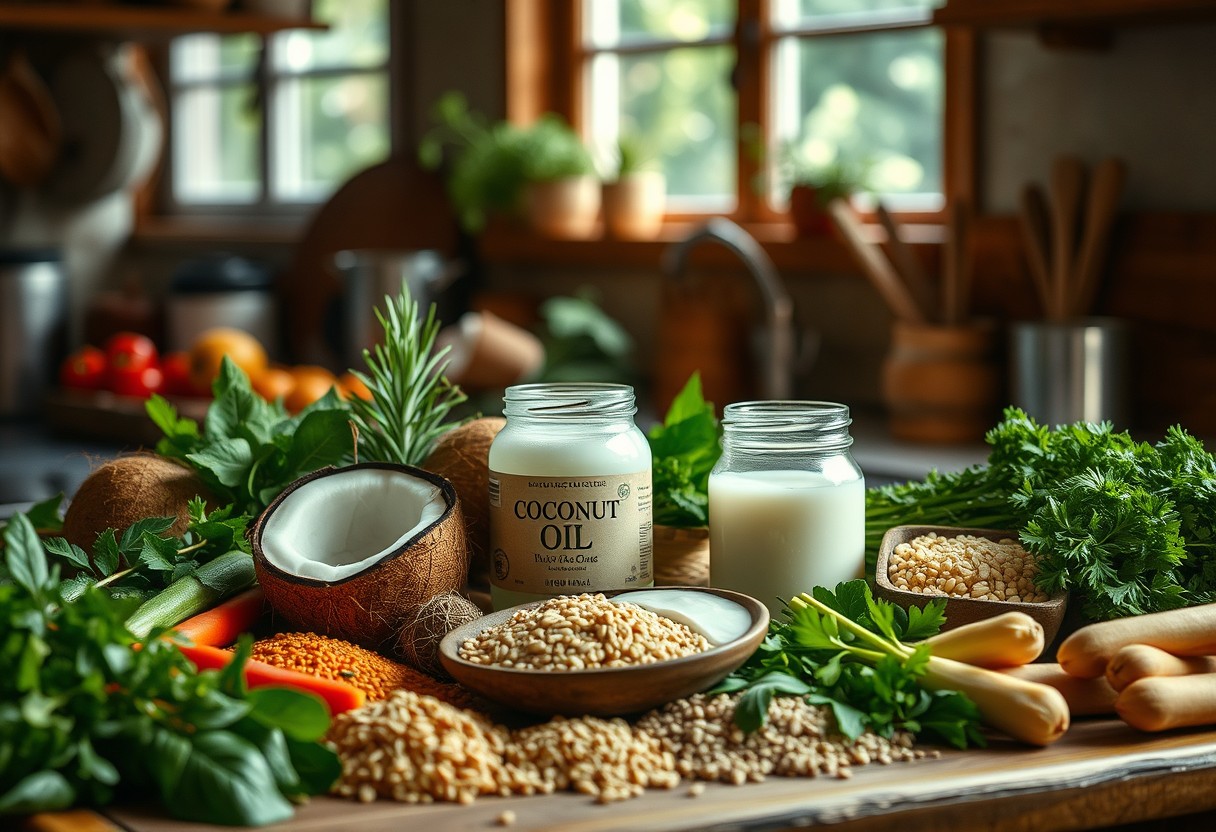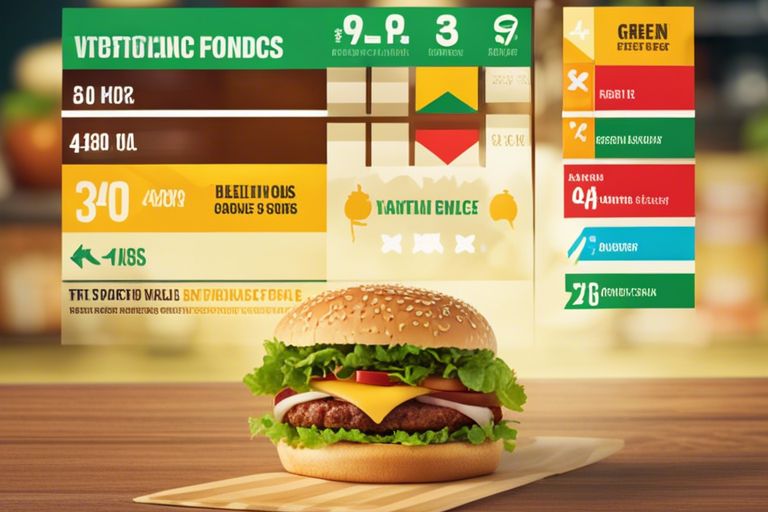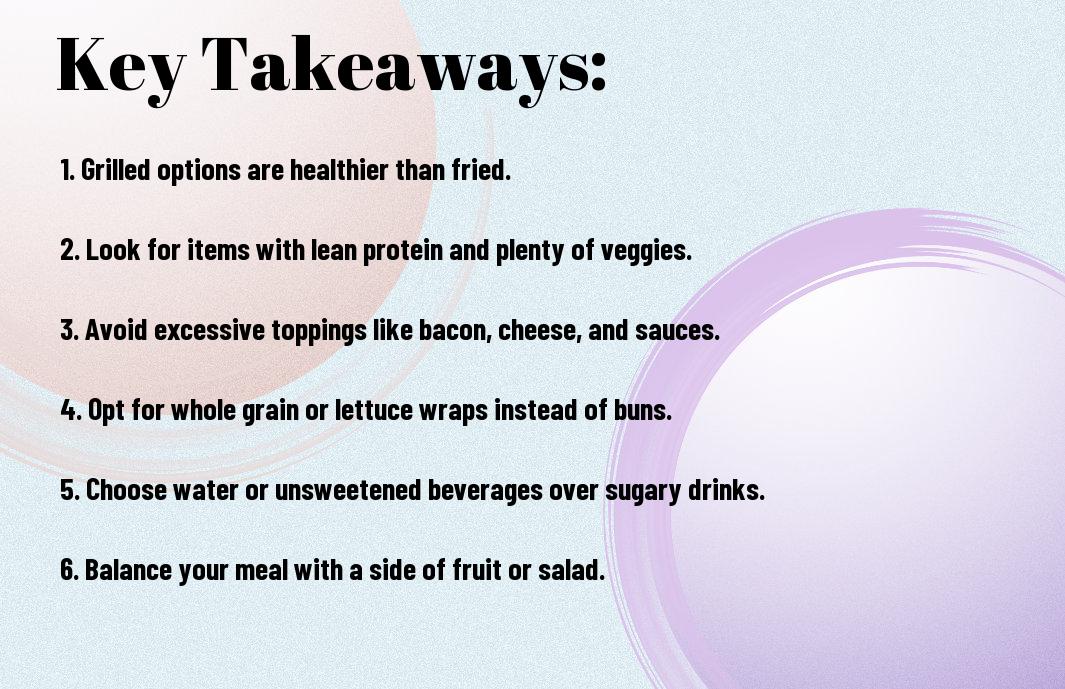Coconut oil, often lauded for its numerous health benefits, raises an important question: Is it considered a whole food? Understanding the definition of whole foods can help you determine whether this popular oil fits into your dietary choices. Whole foods are typically unprocessed or minimally processed foods that maintain their natural state, providing you with crucial nutrients. In this post, you’ll explore the characteristics of coconut oil and whether it truly qualifies as a whole food, allowing you to make informed decisions about your nutrition.
Key Takeaways:
- Coconut Oil is Processed: Unlike whole foods, which are minimally processed and retain their natural state, coconut oil is extracted from coconuts and undergoes processing.
- Nutrition Profile: Coconut oil lacks many of the nutrients found in whole coconuts, such as fiber, vitamins, and minerals, making it less beneficial compared to whole foods.
- Usage in Diet: While coconut oil can be used as a cooking fat, it should be consumed in moderation as part of a balanced diet that prioritizes whole food sources.
Understanding Whole Foods
Before delving into whether coconut oil qualifies as a whole food, it’s vital to understand the concept of whole foods and what sets them apart from processed options.
Definition of Whole Foods
To clarify, whole foods are minimally processed or refined foods that retain their natural state and contain no artificial additives or preservatives. They are as close to their original form as possible, making them a cornerstone of a healthy diet.
Characteristics of Whole Foods
To recognize whole foods, you can look for several defining characteristics. These foods typically have high nutritional value and are rich in vitamins, minerals, and fiber while being free of added sugars and unhealthy fats.
For instance, whole foods like fruits, vegetables, whole grains, nuts, and seeds provide your body with vital nutrients. They often have a shorter ingredient list, if any, and you can often recognize them by their natural colors, textures, and flavors. This quality makes whole foods not only healthier choices but also more satisfying and energizing.
Examples of Whole Foods
Any food that is consumed in its natural state or with minimal processing is considered a whole food. This includes fresh produce, legumes, whole grains, nuts, and seeds.
Understanding the breadth of whole foods allows you to make informed choices in your diet. By incorporating a variety of whole foods into your meals, you can enhance your overall health and well-being. Choosing these foods not only nourishes your body but also supports a sustainable lifestyle.
The Composition of Coconut Oil
While exploring the health benefits and culinary uses of coconut oil, it’s helpful to understand its composition. Coconut oil primarily consists of fats, particularly saturated fats that are often misunderstood in the context of modern dietary discussions. For a closer look at high-quality coconut oil options, check out Organic Unrefined Coconut Oil Virgin, 14 fl oz.
Nutritional Profile
Composition of coconut oil reveals that it contains approximately 90% saturated fat, predominantly medium-chain triglycerides (MCTs), which are quickly metabolized for energy. Additionally, coconut oil provides small amounts of vitamins E and K, alongside various antioxidants.
Types of Coconut Oil
Coconut oil can be categorized into several types based on its extraction and processing methods, impacting both flavor and nutritional properties. Understanding these distinctions can enhance your selection process:
- Virgin coconut oil
- Refined coconut oil
- Cold-pressed coconut oil
- Fractionated coconut oil
- Organic coconut oil
Thou will find that these variations serve different purposes in cooking and skin care, ensuring you have options that suit your needs.
| Type | Description |
| Virgin Coconut Oil | Extracted from fresh coconut meat without chemicals. |
| Refined Coconut Oil | Processed for a neutral flavor and higher smoke point. |
| Cold-Pressed Coconut Oil | Extracted without heat to preserve nutrients. |
| Fractionated Coconut Oil | Contains only medium-chain triglycerides; liquid at room temperature. |
| Organic Coconut Oil | Made from coconuts grown without pesticides or chemicals. |
Processing Methods
Types of coconut oil are influenced by the processing methods employed, which can affect flavor, nutritional content, and cooking versatility. The processes include cold-pressing, refining, and chemical extraction, each leading to different characteristics.
It is necessary to choose the right processing method based on your intended use. For example, virgin coconut oil retains more nutrients, while refined versions are often more suitable for high-heat cooking:
- Cold-pressed retains more health benefits.
- Refined is ideal for frying.
- Organic options ensure fewer chemicals.
- Fractionated is used in cosmetics.
- Unrefined maintains aroma and flavor.
Thou will discover that understanding these methods can empower your choices for cooking and personal care.
| Processing Method | Description |
| Cold-Pressing | Gentle extraction maintaining nutrient integrity. |
| Refining | Removes impurities and enhances smoke point. |
| Chemical Extraction | Uses solvents to extract oil; less nutritious. |
| Hydrogenation | Solidifies oil, affecting health benefits. |
| Organic Processing | Avoids synthetic chemicals throughout production. |

Coconut Oil in Diet
All in all, integrating coconut oil into your diet can be a flavorful choice, but it’s important to understand its role and implications for health. For a deeper exploration, take a look at Coconut Oil–The Ultimate Guide.
Health Benefits
For many, coconut oil is praised for its potential health benefits, including its ability to boost metabolism, provide quick energy, and support healthy skin and hair. The medium-chain triglycerides (MCTs) found in coconut oil may also aid in weight management.
Potential Risks
An important consideration when using coconut oil is its saturated fat content. These fats can raise your LDL cholesterol levels, which may increase the risk of heart disease if consumed in excess.
Understanding the implications of consuming high levels of saturated fat is crucial. While coconut oil can be part of a balanced diet, moderation is key. You should limit your intake, especially if you have a predisposition to heart-related issues. It’s advisable to monitor your overall fat consumption and consult with a health professional if you’re uncertain about its suitability for your diet.
Recommended Usage
With a good balance, you can effectively incorporate coconut oil into your meals. Aim for 1-2 tablespoons per day, ensuring it complements a diverse diet rich in fruits, vegetables, and whole grains.
Diet plays a vital role in your overall health, and coconut oil can be one element of that diet. You might consider using it in cooking or baking, but remember that moderation is vital. By combining coconut oil with other nutrient-dense foods, you can enjoy its unique flavor and benefits responsibly.

Final Words
Now that you have explored the question of whether coconut oil qualifies as a whole food, it’s vital to understand that, while it is derived from the coconut fruit, it is processed and lacks the fiber and nutrients found in whole foods. Therefore, while it can be a part of a balanced diet, you should consider it more as an ingredient rather than a whole food itself. Emphasizing a diverse range of whole foods in your diet will ensure you receive the comprehensive nutritional benefits necessary for optimal health.
FAQ
Q: Is coconut oil considered a whole food?
A: Coconut oil is not considered a whole food. Whole foods are natural foods that are unprocessed and unrefined, such as fruits, vegetables, grains, and legumes. Coconut oil, being a refined product derived from coconuts, lacks the fiber and nutrients found in the whole coconut fruit itself. Therefore, while it is derived from a whole food, coconut oil does not meet the criteria to be classified as one.
Q: What is the difference between coconut oil and whole coconut?
A: The key difference lies in the processing and nutritional content. Whole coconut contains not only oil but also dietary fiber, water, vitamins, and minerals. In contrast, coconut oil is primarily composed of saturated fats and lacks the fiber and most of the nutrients present in the whole fruit. Consuming whole coconut provides a broader range of health benefits compared to just using its oil.
Q: Can coconut oil be part of a whole food diet?
A: While coconut oil itself is not a whole food, it can still be included in a whole food diet in moderation. If someone is following a whole food diet, they should primarily focus on consuming unprocessed foods. Coconut oil can be used as a cooking fat or in recipes, but it should not replace whole food sources of crucial nutrients, such as avocados, nuts, seeds, and oily fish.
Q: Are there health benefits to consuming coconut oil despite it not being a whole food?
A: Yes, coconut oil offers some health benefits, primarily due to its high content of medium-chain triglycerides (MCTs), which can provide quick energy and may support weight management. Some studies suggest that MCTs can boost metabolism and promote fat loss, but these effects vary by individual. However, it’s important to note that these benefits do not outweigh the advantages of consuming whole coconut or other whole food sources.
Q: How should coconut oil be used in a healthy diet?
A: Coconut oil can be used as a healthy cooking oil for sautéing and baking due to its high smoke point. However, it should be used in moderation to avoid excessive consumption of saturated fat, which may affect heart health. A balanced approach includes using coconut oil alongside a variety of whole foods, ensuring a well-rounded nutrient intake from fruits, vegetables, whole grains, and proteins while incorporating coconut oil as a flavorful addition.
















